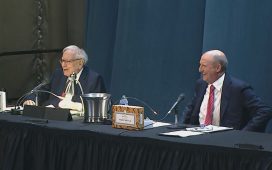D3sign | Moment | Getty Images
Women spend more time than men providing unpaid care for children, older adults and other family members — time that can have a significant effect on their finances.
Women spend an average 51.6 minutes a day caring for household children, other household members and nonhousehold members, according to a new analysis from the National Partnership for Women and Families. Men spend an average 26.4 minutes daily on such tasks.
“We talk about the wage gap all the time, but this ‘time gap’ is also a huge impact on people’s lives,” said Katherine Gallagher Robbins, senior fellow at the National Partnership for Women and Families.
If that time caregiving were compensated, it would be worth about $2,335.93 annually for men and $4,565.68 for women. The group based its calculations on an hourly rate of $14.55 an hour, the midpoint between mean wages of child care workers and personal care aides.
On a broader level, unpaid caregiving is worth $305.01 billion a year for men and $626.57 billion for women, the National Partnership for Women and Families estimates.
In other words, the caregiving time gap costs women an extra $321.56 billion a year.
‘Caregiving has been a problem for a long time’
The National Partnership for Women and Families is not the only organization to flag the financial and time burdens of caregiving.
About 38 million people provided unpaid care to an adult family member or friend in 2021, according to the latest data from AARP. It estimates the economic value of unpaid care was $600 billion, based on a total of 36 billion hours of care at an average value of $16.59 an hour, AARP found.
“Caregiving has been a problem for a long time, as far as how much of it is unpaid, and also that the majority of it does fall on women,” said certified financial planner Carolyn McClanahan, founder of Life Planning Partners in Jacksonville, Florida.

To that point, 61% of caregivers are women, while 39% are men, according to a 2020 AARP study.
A lot of women are part of the “sandwich generation,” who are still taking care of young children when their aging parents start having needs, said McClanahan, who is also a member of the CNBC Financial Advisor Council.
This is observed among adults between ages 35 and 44, when the most intensive period of caregiving for both men and women occurs, the U.S. Bureau of Labor Statistics has found.
“That age band is the peak caregiving period for both men and women, though the gap is still very large between men and women,” said Gallagher Robbins.
Caregivers may have resources available to relieve some of the burden and provide care for those in need.
For instance, family caregivers may be able to be paid by Medicaid, depending on their state of residence. The amount of funds varies upon the elderly person’s needs and the average wage paid to home health aides in that state.











